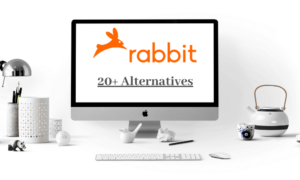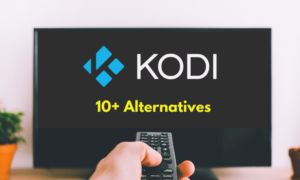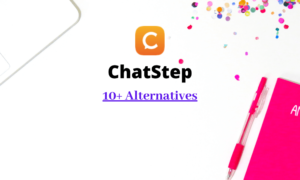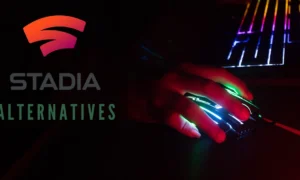In today’s on-demand digital era, consumers expect control, flexibility, and a variety of ways to access content. To thrive, businesses must build an OTT streaming platform that caters to all user segments—free, paid, and transactional.
Traditional one-size-fits-all monetization strategies are no longer sufficient. With ever-changing viewer behavior, supporting multiple monetization models like AVOD, SVOD, and TVOD is essential for platform scalability and profitability. Whether you’re launching a video on demand solution or expanding your OTT video streaming platform, success depends on monetization versatility and user-centric design
Understanding AVOD, SVOD, and TVOD: What They Are and How They Work in OTT
Each OTT monetization model offers a distinct way to generate revenue, with different use cases based on content type and audience behavior.
- AVOD (Ad-Supported Video on Demand): AVOD platforms provide free content access in exchange for advertisements. It’s a smart choice for platforms targeting emerging markets or cost-sensitive audiences. With integrated ad servers, this model enables rapid user growth and brand partnerships—ideal for OTT live streaming platforms or content aggregators looking for mass outreach.
- SVOD (Subscription Video on Demand): SVOD offers content through recurring subscriptions. Platforms like Netflix and Disney+ have perfected this model. It’s perfect for creators with exclusive, regularly updated content libraries. SVOD also brings in predictable revenue, which is great for long-term planning and scaling, especially if you’re using a white-label OTT solution or a VOD platform provider.
- TVOD (Transactional Video on Demand): TVOD enables users to rent or purchase individual content items. It’s a good fit for premium films, live concerts, or sports events. Content owners benefit from higher margins per transaction. Adding TVOD to your OTT streaming solution allows time-sensitive monetization for high-value releases.
- Understanding and balancing these models ensures you’re not relying on a single stream—and that’s vital in a competitive OTT streaming platform market
Related: How OTT Is Changing the Media Industry
How to Plan the Right Monetization Strategy for Your OTT Platform’s Success
Planning your monetization roadmap is critical before you build an OTT platform or choose a vendor. Each step should align with content type, audience geography, and your brand goals.
- Segment your audience: Analyze viewing behavior, content preferences, and payment habits. Some users binge-watch and prefer SVOD, while others watch casually and are more open to ads (AVOD). Geographic and demographic segmentation ensures more accurate monetization mapping and better ROI from your OTT platform streaming solution.
- Map content value to model: High-volume general content might work best with AVOD, while niche tutorials or exclusive shows fit well under SVOD. Premium or early-access events should be monetized through TVOD. Each content category should align with the best OTT monetization model to maximize value.
- Implement A/B testing: Use data analytics to test which model drives the most revenue for each user group. Some platforms even localize monetization—using AVOD in developing regions and SVOD in developed ones. Tools offered by OTT platform providers like Innocrux help optimize monetization based on real-time data
Must-Have Features Your OTT Streaming Platform Needs to Support AVOD, SVOD & TVOD
To run a successful video streaming OTT platform that supports all three monetization models, you need essential built-in features for scalability, compliance, and user experience.
- Dynamic Ad Insertion (DAI): Ensure seamless ad delivery during AVOD content playback using server-side or client-side ad technology. Integrate with major ad exchanges and allow for ad targeting, frequency capping, and reporting. DAI ensures that even free users generate consistent revenue on your OTT live streaming platform.
- Subscription Billing System: Enable recurring payments, free trials, seasonal offers, and tiered pricing plans. Support multiple payment methods—credit cards, wallets, UPI, and international gateways. This helps retain subscribers while giving them flexibility and security in your SVOD platform setup.
- Transactional Purchase Engine: Build a secure and intuitive system for renting or purchasing content with support for promo codes, digital receipts, and region-based pricing. This is essential for TVOD model success—especially in IPTV OTT solutions or one-time events like pay-per-view sports.
- User Management and Access Control: Let users create profiles, track viewing history, manage parental controls, and access content based on subscription level or transaction history. This feature enhances personalization and keeps the OTT platform video streaming experience clean and structured.
Revenue and Viewer Analytics: Offer real-time insights into monetization performance, content engagement, churn rate, and viewer demographics. With analytics dashboards, platform owners can refine strategies and optimize revenue from each monetization model on a continuous basis.
How to Choose the Best OTT Solution Provider for Hybrid Monetization Models
Your choice of OTT solution provider will define how well your platform can support hybrid monetization now and in the future
End-to-End Support: Opt for providers offering a complete suite—from CMS to monetization and analytics. This ensures smoother integration of SVOD, AVOD, and TVOD models. An end-to-end OTT solution helps eliminate the need for third-party tools and plugins.
- Proven Industry Experience: Choose a vendor experienced in deploying platforms across various industries like media, fitness, education, or religion. Platforms like Innocrux offer tailored monetization support whether you’re launching a church live streaming app, a fitness VOD platform, or a movie-on-demand service.
- Customization & Scalability: Look for vendors offering custom OTT solution development with modular APIs and scalable cloud infrastructure. This lets you evolve the platform as your audience grows and their preferences shift.
- Ad, Payment & DRM Integrations: Ensure native integration with top ad servers (Google Ad Manager), payment gateways (Stripe, Razorpay), and DRM providers (Widevine, FairPlay). These integrations are crucial for security and smooth revenue flow across all monetization models.
- Customer Support & SLA: Choose a OTT platform provider with dedicated onboarding, training, and technical support. Make sure they offer SLA-based performance guarantees for uptime and response times
Also Read: IBM Watson Media Alternatives
How to Build the Backend and Frontend Architecture of a Monetized OTT Platform
Architecture plays a huge role in how your OTT video solution performs under pressure and scales over time. Both backend and frontend need to support a fluid user experience and versatile monetization.
- Backend: Include a robust CMS for content uploads and metadata tagging, video encoding for adaptive bitrate streaming, DRM encryption, user management, and integrated billing modules. The backend must support AVOD (ads), SVOD (subscriptions), and TVOD (transactions) simultaneously for a fully flexible OTT streaming platform.
Frontend: Develop responsive apps for Android, iOS, smart TVs, and the web. Ensure each app supports payment interfaces, ad containers, and personalized user journeys. Optimize UX with intuitive navigation, multi-language UI, dark mode, and recommendation engines powered by AI. - API & Middleware: Build or leverage APIs for billing, analytics, user behavior tracking, and ad monetization. These APIs act as the bridge between backend workflows and frontend UI. Choosing a platform for OTT video streaming with open APIs increases integration options with external services like CRMs or marketing tools
How to Deploy, Test, and Scale an OTT Streaming Platform With Multi-Monetization Support
A great product launch strategy must include pre-deployment testing, go-live planning, and post-launch monitoring.
- Multi-CDN Support: Use global content delivery networks to reduce latency and ensure smooth streaming experiences for users anywhere in the world. Multi-CDN redundancy improves reliability during peak loads or failures.
Load Testing for Scalability: Simulate 1,000s of users accessing your content simultaneously across different monetization models. This helps identify bottlenecks in payment processing, ad rendering, and playback. Load testing is crucial for live event platforms or OTT TV solutions with large concurrent users. - Automated QA & Device Testing: Run automated tests across different devices and operating systems. Ensure the app works equally well on a 6-inch phone and a 55-inch smart TV. This ensures better usability and prevents user churn.
- Localization & Geo-fencing: Serve content and pricing plans based on country or region. Customize currency, subtitles, and payment methods. This is especially important if you plan to build an OTT platform for a global audience.
- Elastic Scaling on Cloud Infrastructure: Auto-scale your services based on traffic. Use Kubernetes or similar container orchestration to launch additional servers during spikes—critical for platforms with viral content or live events.
- Conclusion: Why Supporting AVOD, SVOD & TVOD Is the Future of OTT Monetization
The OTT market is no longer about streaming alone—it’s about monetizing smartly, flexibly, and globally. By building a OTT streaming platform that supports AVOD, SVOD & TVOD, you’re creating a future-ready foundation that meets all user expectations and maximizes revenue potential.
Must Read: Vimeo OTT Alternatives
Conclusion
Choosing the right OTT platform provider, embedding key monetization features, and architecting for scale are the pillars of success. With providers like Innocrux offering white-label OTT platforms, custom VOD platforms, and live streaming solutions, you can go live with confidence. Whether you’re still learning what is OTT streaming platform or planning how to build a live video streaming web application, the goal is clear: be flexible, user-first, and monetization-ready from day one
Dwarakesh is Video Monetization & OTT Expert at CONTUS VPlayed. Interested in digging deep into video/audio streaming media tools and Love to blog, discuss and share views on the latest technologies tips, and tricks. He’s also passionate about photography loves to capture the pure essence of life.





















